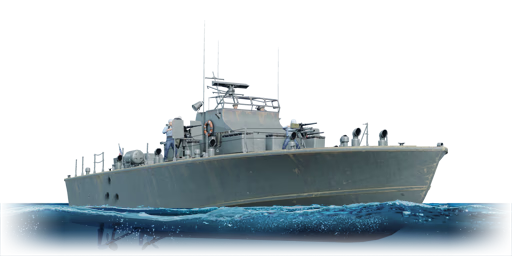The 80ft Nasty-class patrol boat was a class of 20 patrol boats operated by the US Navy and the USMC. Designed in 1958 as the Tjeld-class PT boat, a private venture for the Royal Norwegian Navy by Westermoen Båtbyggeri, the class saw some success as some boats were exported to West Germany and Greece. As the United States became directly involved in the Vietnam War in 1962, the need for riverine patrol boats arose. Due to virtually all World War II-era PT boats having been either decommissioned or disposed of, a decision was made to order 20 new patrol boats derived from the Tjeld-class design that year. As the Nasty-class was intended to only be used inland, its torpedoes were replaced with a set of 81 mm mortars to provide fire support and take out river fortifications. The class would serve extensively throughout the war, with six lost in action, before being decommissioned as late as 1981.
The PTF-7 was one of the Nasty-class patrol boats. After being completed in 1964, it was sent to South Vietnam two years later. During the war, it was used to train South Vietnamese crews, conduct patrols, and participate in various covert operations. Following the American withdrawal from Vietnam in 1970, the PTF-7 was sent back to the US and decommissioned seven years later, presumably being scrapped.
Introduced in Update 1.79 “Project X”, the PTF-7 is the first “pure” gunboat available to the US coastal tree. Compared to other early coastal vessels, the PTF-7 features heavy firepower in the form of a single Bofors autocannon at the stern and a pair of Oerlikon autocannons flanking the bridge. This, combined with the boat’s impressive agility, allows the PTF-7 to tackle any PT boats it could face with ease. However, the PTF-7 does not have any torpedoes to deal with heavier ships (especially destroyers), as well as being vulnerable to returning fire in turn. As such, be sure to use cover to shield the frontal half of the boat from harm.




